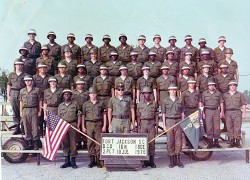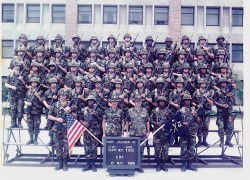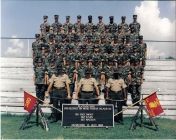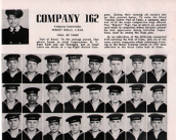Combat Engineers provide much-needed combat engineering, like building roads, constructing bridges or helping our forces to move across foreign land. Some of your duties as a Combat Engineer may include: constructing trails, roads and field fortifications such as shelters, bunkers and gun emplacements; assembling floating or prefabricated bridges. Having a combination of combat ability and building skills is necessary when it comes to tackling rough terrain in combat situations. Combat Engineers primarily supervise, serve or assist as a member of a team. They provide much-needed combat engineering, such as building roads, constructing bridges or helping our forces to move across foreign land.
21B1O - Skill Level One




Combat Engineer: Some of your duties as a Combat Engineer may include constructing trails, roads and field fortifications such as shelters, bunkers and gun emplacements. Assembling floating or prefabricated bridges. Operating various light or heavy engineer vehicles. Placing and detonating explosives. Loading, unloading and moving supplies and equipment using planes, helicopters, trucks and amphibious vehicles. Operating or serving as a crewmember on a combat engineer vehicle, armored vehicle launch bridge or an armored combat earthmover. Preparing and installing firing systems for demolition and explosives. Locating mines by visual means or by using a mine detector.
Vehicle Driver: Operate all wheel vehicles and equipment over varied terrain and roadways for support of combat operations. Manage entrucking and detrucking of personnel being transported. Oversees and checks proper loading and unloading of cargo on vehicles and trailers. Secure cargo against inclement weather, pilferage and damage. Operate vehicle component material handling equipment (MHE), as required. Employs land navigation techniques. Driver must be knowledgeable with the operation of radios and weapons when they are mounted on the vehicle. Perform vehicle self‑recovery and field expedients to include towing vehicles. Corrects or reports all vehicle deficiencies; supports mechanics where necessary. Prepare vehicle for movement/shipment by air, rail, or vessel.
Vehicle Driver: Operate all wheel vehicles and equipment over varied terrain and roadways for support of combat operations. Manage entrucking and detrucking of personnel being transported. Oversees and checks proper loading and unloading of cargo on vehicles and trailers. Secure cargo against inclement weather, pilferage and damage. Operate vehicle component material handling equipment (MHE), as required. Employs land navigation techniques. Driver must be knowledgeable with the operation of radios and weapons when they are mounted on the vehicle. Perform vehicle self‑recovery and field expedients to include towing vehicles. Corrects or reports all vehicle deficiencies; supports mechanics where necessary. Prepare vehicle for movement/shipment by air, rail, or vessel.
21B2O - Skill Level Two

Combat Engineer: Combat engineers supervise, or serve, as a member of a team, squad, section, or platoon. They are engaged in providing mobility, counter-mobility and survivability support to combat forces. Supervises lower grade Soldiers and provides technical guidance to the Soldiers in the accomplishment of their duties. Directs and assists in the operation of engineer wheeled or tracked vehicles. Directs the construction of fighting positions and wire entanglements. Controls fire team movements. Directs the placement of explosives and clears misfires. Directs a mine-clearing line charge loading team. Directs the installation and removal of U.S. anti-handling devices on anti-tank mines. Directs minefield marking party and dispensing operation of mine scattering systems. Conducts reconnaissance operations, determines limiting slopes, curves, stream velocity, and gap widths.
21B3O - Skill Level Three

Construction Foreman: The Construction Foreman serves at the battalion and brigade level. The Construction Foreman is responsible for the oversight of all construction projects within his organization. The Construction Foreman must determine the Bill of Material (BOM) for each project and manage them closely to ensure that all projects are completed on time, within budget, and to standard. In addition to the previously mentioned duties, the Construction Foreman also serves in many instances as the Assistant Operations Sergeant.
Reconnaissance Sergeant: The Recon Sergeant is responsible for tracking route status, improvised explosive devices (IEDs) found or detonated, and engineer assets on the battlefield. Recon sergeants are responsible for locating and reporting enemy engineer obstacles and identifying bypasses. Additionally, they are experts in route and engineer reconnaissance, this includes gathering critical data about bridges, fording sites, and assets along routes that would be useful in engineer missions. Reconnaissance Sergeant Duties; Advise the commander. Track the status of all routes. Coordinate, track, and make recommendations on force protection measures. Assist the S-2. Oversee the cache collection point. Track enemy IED activity. Gather essential data on routes within sector. Report composition of enemy obstacles and bypass locations.
Section Leader: Section leaders are normally staff sergeants and sergeants that serve in assault and obstacle (A&O) platoons and are a critical link in the NCO channel. Section leaders live and work with their soldiers every day and are responsible for their health, welfare and safety. These NCOs ensure that their soldiers meet standards in personal appearance; maintain and account for their individual and unit equipment and property. The squad leader teaches individual and collective training, develops unit cohesion, fosters the values of loyalty and commitment and builds spirit and confidence. The section leader evaluates performance oriented training; coaching and counseling; and grooms young soldiers for future positions of increased responsibility. Section Leaders are expected to make sound and timely decisions ranging from the amount of physical training to ethics and values. These NCOs are the basic trainer of today’s Soldiers.
Squad Leader: Squad leaders are normally staff sergeants and sergeants and are a critical link in the NCO channel. Squad leaders live and work with their soldiers every day and are responsible for their health, welfare and safety. These NCOs ensure that their soldiers meet standards in personal appearance; maintain and account for their individual and unit equipment and property. The squad leader teaches individual and collective training, develops unit cohesion, fosters the values of loyalty and commitment and builds spirit and confidence. The squad leader evaluates performance oriented training; coaching and counseling; and grooms young soldiers for future positions of increased responsibility. Squad Leaders are expected to make sound and timely decisions ranging from the amount of physical training to ethics and values. These NCOs are the basic trainer of today’s Soldiers.
Reconnaissance Sergeant: The Recon Sergeant is responsible for tracking route status, improvised explosive devices (IEDs) found or detonated, and engineer assets on the battlefield. Recon sergeants are responsible for locating and reporting enemy engineer obstacles and identifying bypasses. Additionally, they are experts in route and engineer reconnaissance, this includes gathering critical data about bridges, fording sites, and assets along routes that would be useful in engineer missions. Reconnaissance Sergeant Duties; Advise the commander. Track the status of all routes. Coordinate, track, and make recommendations on force protection measures. Assist the S-2. Oversee the cache collection point. Track enemy IED activity. Gather essential data on routes within sector. Report composition of enemy obstacles and bypass locations.
Section Leader: Section leaders are normally staff sergeants and sergeants that serve in assault and obstacle (A&O) platoons and are a critical link in the NCO channel. Section leaders live and work with their soldiers every day and are responsible for their health, welfare and safety. These NCOs ensure that their soldiers meet standards in personal appearance; maintain and account for their individual and unit equipment and property. The squad leader teaches individual and collective training, develops unit cohesion, fosters the values of loyalty and commitment and builds spirit and confidence. The section leader evaluates performance oriented training; coaching and counseling; and grooms young soldiers for future positions of increased responsibility. Section Leaders are expected to make sound and timely decisions ranging from the amount of physical training to ethics and values. These NCOs are the basic trainer of today’s Soldiers.
Squad Leader: Squad leaders are normally staff sergeants and sergeants and are a critical link in the NCO channel. Squad leaders live and work with their soldiers every day and are responsible for their health, welfare and safety. These NCOs ensure that their soldiers meet standards in personal appearance; maintain and account for their individual and unit equipment and property. The squad leader teaches individual and collective training, develops unit cohesion, fosters the values of loyalty and commitment and builds spirit and confidence. The squad leader evaluates performance oriented training; coaching and counseling; and grooms young soldiers for future positions of increased responsibility. Squad Leaders are expected to make sound and timely decisions ranging from the amount of physical training to ethics and values. These NCOs are the basic trainer of today’s Soldiers.
21B4O - Skill Level Four

Assistant Operations Sergeant: The Assistant Operations Sergeant assists the Operations Sergeant in organizing, and coordinating the brigade and supporting unit’s engineer operations. He is the noncommissioned officer in charge (NCOIC) of the operations in the absence of the operations sergeant, the assistant operations sergeant advises the Bde Commander on the current and future employment of engineers. He assists the assistant division engineer and maintains the current operational status of engineer units supporting the brigade/division.
Construction Inspector: The Construction Inspector is engaged in various projects throughout the Battalion and Brigade. It includes: earthwork, reinforced and plain concrete; forms and forming; rockwork; how to take samples and make field tests; how to interpret drawings and specifications; and documentation of information pertinent to construction. The content covers the "inspector's job" including what to do and how to do it. It includes earthen structures, concrete, steel, rock, and geo-textiles.
Detachment Sergeant: The Detachment Sergeant is accountable to the Detachment Commander and performs duties similar to a 1SG. He/She is responsible for providing sound advice to the commander on a wide range of topics including the health, esprit de corps, discipline, mentoring, well being, career progression, recognition, and professional development of all assigned enlisted members. Furthermore, working with his or her fellow NCOs and supervisors, the detachment sergeant ensures discipline is equitably maintained, and the goals of health, esprit de corps, discipline, mentoring, and welfare of the enlisted force are met. Detachment sergeants must be proactive in the performance of his or her duties; demonstration of initiative, innovation, and strength of character are imperatives in this vocation.
Engineer Project Management NCO: The Engineer Project Management NCO assists in organizing, and coordinating the Division engineer projects and operations. He is the noncommissioned officer in charge (NCOIC) of the projects and operations. The Engineer Project Management NCO advises the Division Chief of Staff on the current and future projects and operations of engineers and the overall construction training of his unit. Maintains the current project status of the Division footprint.
Master Gunner: The primary mission of the master gunner is to aid and assist commanders at all echelons in the planning, development, execution, and evaluation of all crew-served weapons related training (individual, crew, and collective). The master gunner's specific duties are directed by the commander. Examples of his duties are: Develop or conduct training and certification of crew evaluators. Assist all elements within the unit concerning gunnery training. Forecast all ammunition for training. Manage gunnery records, GST records, and turbulence rosters. Coordinate and control training devices. Train crews on MILES gunnery peculiarities (zeroing and maintenance). Execute gunnery training. Supervise live-fire ranges to ensure all standards are followed; specifically-- Confirm screening and zero techniques, Coordinate target arrays, exposure times for all targets, and maneuver box verification, Set up all ranges to make sure they meet the standards set forth in this manual, Set up and conduct GST training, and evaluate the results, Advise the commander of the tactical capabilities of all weapons and weapon systems.
Platoon Sergeant: The Platoon Sergeant is the primary assistant and advisor to the platoon leader, with the responsibility of training and caring for soldiers. The platoon sergeant helps the commander to train the platoon leader and in that regard has an enormous effect on how that young officer perceives NCOs for the rest of his career. The platoon sergeant takes charge of the platoon in the absence of the platoon leader. As the lowest level senior NCO involved in the company METL, platoon sergeants teach collective and individual tasks to soldiers in their squads, crews or equivalent small units.
Operations Sergeant: The Operations Sergeant assists in organizing, and coordinating the company/battalion/brigade and supporting unit’s engineer operations. He is the noncommissioned officer in charge (NCOIC) of the operations in the absence of the Executive/Operations Officer. The Operations Sergeant advises the Company/Battalion/Brigade Commander on the current and future employment of engineers. He maintains the current operational status of the engineer unit. He organizes, deploys and supervises the field Tactical Operations Center (TOC).
Construction Inspector: The Construction Inspector is engaged in various projects throughout the Battalion and Brigade. It includes: earthwork, reinforced and plain concrete; forms and forming; rockwork; how to take samples and make field tests; how to interpret drawings and specifications; and documentation of information pertinent to construction. The content covers the "inspector's job" including what to do and how to do it. It includes earthen structures, concrete, steel, rock, and geo-textiles.
Detachment Sergeant: The Detachment Sergeant is accountable to the Detachment Commander and performs duties similar to a 1SG. He/She is responsible for providing sound advice to the commander on a wide range of topics including the health, esprit de corps, discipline, mentoring, well being, career progression, recognition, and professional development of all assigned enlisted members. Furthermore, working with his or her fellow NCOs and supervisors, the detachment sergeant ensures discipline is equitably maintained, and the goals of health, esprit de corps, discipline, mentoring, and welfare of the enlisted force are met. Detachment sergeants must be proactive in the performance of his or her duties; demonstration of initiative, innovation, and strength of character are imperatives in this vocation.
Engineer Project Management NCO: The Engineer Project Management NCO assists in organizing, and coordinating the Division engineer projects and operations. He is the noncommissioned officer in charge (NCOIC) of the projects and operations. The Engineer Project Management NCO advises the Division Chief of Staff on the current and future projects and operations of engineers and the overall construction training of his unit. Maintains the current project status of the Division footprint.
Master Gunner: The primary mission of the master gunner is to aid and assist commanders at all echelons in the planning, development, execution, and evaluation of all crew-served weapons related training (individual, crew, and collective). The master gunner's specific duties are directed by the commander. Examples of his duties are: Develop or conduct training and certification of crew evaluators. Assist all elements within the unit concerning gunnery training. Forecast all ammunition for training. Manage gunnery records, GST records, and turbulence rosters. Coordinate and control training devices. Train crews on MILES gunnery peculiarities (zeroing and maintenance). Execute gunnery training. Supervise live-fire ranges to ensure all standards are followed; specifically-- Confirm screening and zero techniques, Coordinate target arrays, exposure times for all targets, and maneuver box verification, Set up all ranges to make sure they meet the standards set forth in this manual, Set up and conduct GST training, and evaluate the results, Advise the commander of the tactical capabilities of all weapons and weapon systems.
Platoon Sergeant: The Platoon Sergeant is the primary assistant and advisor to the platoon leader, with the responsibility of training and caring for soldiers. The platoon sergeant helps the commander to train the platoon leader and in that regard has an enormous effect on how that young officer perceives NCOs for the rest of his career. The platoon sergeant takes charge of the platoon in the absence of the platoon leader. As the lowest level senior NCO involved in the company METL, platoon sergeants teach collective and individual tasks to soldiers in their squads, crews or equivalent small units.
Operations Sergeant: The Operations Sergeant assists in organizing, and coordinating the company/battalion/brigade and supporting unit’s engineer operations. He is the noncommissioned officer in charge (NCOIC) of the operations in the absence of the Executive/Operations Officer. The Operations Sergeant advises the Company/Battalion/Brigade Commander on the current and future employment of engineers. He maintains the current operational status of the engineer unit. He organizes, deploys and supervises the field Tactical Operations Center (TOC).
School Information
School: 807 School Location: FT LEONARD WOOD, MO
Course: 030-21B10 (R) Phase:
Course Title: COMBAT ENGINEER
FY: 2008 School: 807 Course: 030-21B10 (R) Phase: Course Length: 6 Weeks 0.0 Days
Verifiable Prerequisites
Prerequiste Item Value(s) or Range Constraint PULHES 111221 Required
Normal Red/Green (RG) Perception YES Required
Physical Demand Rating VERY HEAVY - LIFT OCCASIONAL OVER 100 LB, FREQUENT 50 LB Required
Male Gender Requirement YES Required
Prerequisite Courses
There are no Prerequisite Courses.
Text Prerequisites
Qualifying scores.
(a) A minimum score of 90 in aptitude area CO in Armed Services Vocational aptitude Battery (ASVAB) tests administered prior to 2 January 2002.
(b) A minimum score of 87 in aptitude area CO on ASVAB tests administered on and after 2 January 2002.
Active Army and Reserve Component enlisted personnel who have completed basic combat training.
SECURITY: None
Formal training (completion of MOS 21B course conducted under auspices of U.S. Army Engineer School) mandatory.
Course Scope:
Skill level 1 resident training. Training in engineer tools, mine/countermine operations, basic combat construction, rigging, demolitions, fixed bridging, river crossing operations, and vehicle operations.
Special Information:
There is no Special Information.
Course: 030-21B10 (R) Phase:
Course Title: COMBAT ENGINEER
FY: 2008 School: 807 Course: 030-21B10 (R) Phase: Course Length: 6 Weeks 0.0 Days
Verifiable Prerequisites
Prerequiste Item Value(s) or Range Constraint PULHES 111221 Required
Normal Red/Green (RG) Perception YES Required
Physical Demand Rating VERY HEAVY - LIFT OCCASIONAL OVER 100 LB, FREQUENT 50 LB Required
Male Gender Requirement YES Required
Prerequisite Courses
There are no Prerequisite Courses.
Text Prerequisites
Qualifying scores.
(a) A minimum score of 90 in aptitude area CO in Armed Services Vocational aptitude Battery (ASVAB) tests administered prior to 2 January 2002.
(b) A minimum score of 87 in aptitude area CO on ASVAB tests administered on and after 2 January 2002.
Active Army and Reserve Component enlisted personnel who have completed basic combat training.
SECURITY: None
Formal training (completion of MOS 21B course conducted under auspices of U.S. Army Engineer School) mandatory.
Course Scope:
Skill level 1 resident training. Training in engineer tools, mine/countermine operations, basic combat construction, rigging, demolitions, fixed bridging, river crossing operations, and vehicle operations.
Special Information:
There is no Special Information.




